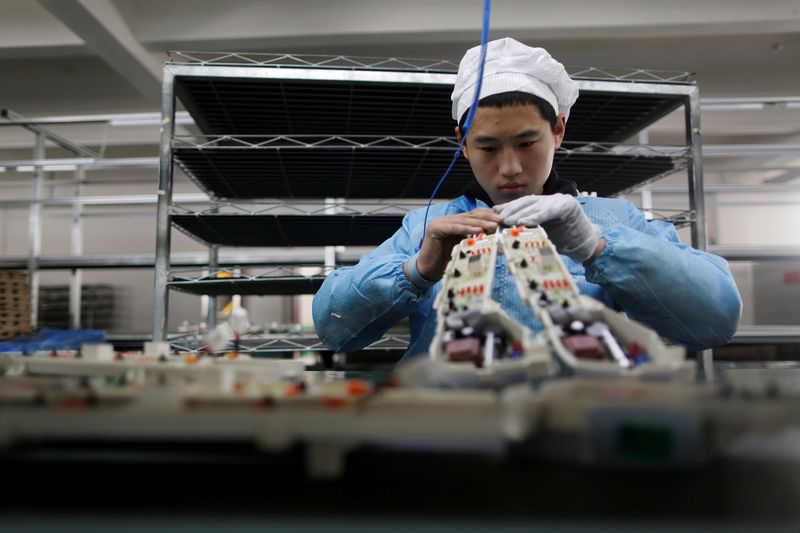BEIJING (Reuters) - Growth in China's manufacturing sector in February slowed more than expected to the weakest in over 1-1/2 years as the Lunar New Year holidays disrupted business activity and tougher pollution rules curtailed factory output.
The official Purchasing Managers' Index (PMI) released on Wednesday fell to 50.3 in February, from 51.3 in January. But it remained just above the 50-point mark that separates growth from contraction on a monthly basis.
That would mark the 20th straight month of expansion for China's manufacturers, but the sharper drop may raise some concerns for China's leaders as they prepare for the start of the National People's Congress (NPC) next week where Beijing will unveil its economic targets for this year.
Analysts surveyed by Reuters had forecast only a slight easing to 51.2.
The index for output stood at 50.7, down from 53.5 in January as the Lunar New Year holidays disrupted factory activities, the Statistics bureau said. Total new orders also expanded much slower in February.
The week-long Lunar New Year holidays, which fell in February this year but January in 2017, tend to distort data early in the year.
Many factories and offices start to scale back operations ahead of time before shutting for the entire holiday or longer, while some manufacturers front-load shipments or replenish inventories ahead of the break.
Some Chinese steel mills, in particular, are believed to be aggressively building up inventories of raw materials like iron ore so they can spring back to full production once winter smog restrictions are lifted in coming weeks.
However, in a sign that China may continue with the pollution crackdown, the top steelmaking city of Tangshan has proposed new restrictions on production once the current curbs expire in March.
A separate PMI on the steel sector dropped to 49.5 in February from 50.9 in January.
Boosted by government infrastructure spending, a resilient property market and unexpected strength in exports, China's manufacturing and industrial firms helped the economy post better-than-expected growth of 6.9 percent in 2017.
A sister survey showed activity in China's service sector slowed to lowest since October last year in February. The official non-manufacturing Purchasing Managers' Index (PMI) fell to 54.4 from 55.3 in January.
Spending on consumer services this month was likely boosted by the long celebrations, though the statistics bureau said property and financial services slowed. The retail and catering sectors alone posted sales of 926 billion yuan ($146 billion) during the holiday period.
The services sector accounts for over half of China's economy, with rising wages giving Chinese consumers more spending clout.
Chinese policymakers are counting on growth in services and consumption to rebalance their economic growth model from its heavy reliance on investment and exports.
Economists polled by Reuters expected China's economic growth will moderate to around 6.5 percent this year as the property market cools and as authorities press ahead with a clamp down on riskier financial activity that is driving up borrowing costs.
Analysts and financial markets are widely expecting the government to announce a 2018 growth target of around 6.5 percent at the NPC, the same as last year.
A composite PMI covering both the manufacturing and services activity stood at 52.9 in February, down from January's reading of 54.6, but stayed well above the 50-mark that separates expansion from contraction.
